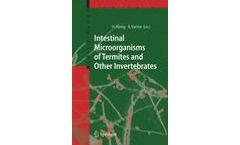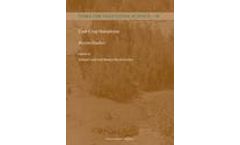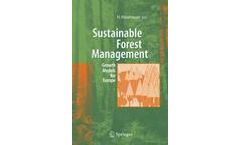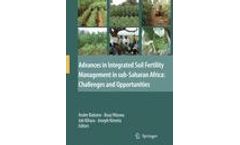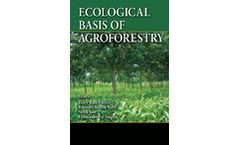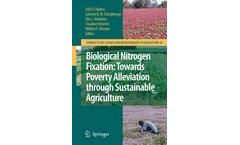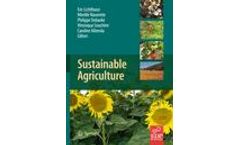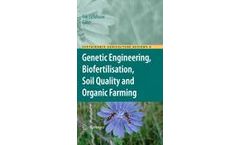Refine by
soil-fertility books
21 books found
In addition to supporting a wide range of vertebrates such as domestic livestock and a variety of games species, grassland is the natural habitat for a wide range of invertebrate species, and this book considers those which occur in grassland and their impact on soil fertility and herbage growth. It describes grassland as a habitat for ...
Food security in West Africa is challenged by complex issues, including rapid population growth, exploitation of nonrenewable resources, and chronic low soil fertility, but in this text experts from world agricultural institutions share their work to provide solutions. Topics covered include soil microorganisms and organic matter, indigenous ...
Soil microorganisms play a major role in the degradation and recycling of organic material. Microbes are involved in the food web and strongly contribute to soil fertility. In the past, attention was mainly directed towards free-living or particle-bound microorganisms, while the role of intestinal microbes of soil animals has ...
In Europe this is especially hard for the farmers in the Mediterranean countries where irrigation farming is very common and many fields have reached a soil salinity level which prevents farmers from raising common crops. This is a world wide problem in dry and semi-dry tropical regions. The losses in soil fertility in certain ...
There is a strong movement towards uneven-aged forest management based on the idea that such stands increase or at least maintain soil fertility, increase biodiversity, and improve stand resilience. ...
This book presents a comprehensive scientific overview of the components and processes that underpin the biological characteristics of soil fertility. It demonstrates the interdependence of soil biological fertility with physical and chemical characteristics of soil. The book highlights the enormous diversity of ...
This book presents a comprehensive scientific overview of the components and processes that underpin the biological characteristics of soil fertility. It demonstrates the interdependence of soil biological fertility with physical and chemical characteristics of soil. The book highlights the enormous diversity of ...
Low agricultural production, results in low incomes, poor nutrition, vulnerability to risks and lack of empowerment. Land degradation and soil fertility depletion are considered the major threats to food security and natural resource conservation in sub-Saharan Africa (SSA). ...
Crovetto was able to renovate his soils and obtain high wheat and corn yields using no-till and adequate fertilizers. The soil not only recuperated, but became far more productive than the original soil. This book combines a thorough treatment of the science of soil management with many personal experiences. An ...
Collapsing engineering soils are a formidable hazard around the world. These difficult materials also include some of the world's most fertile agricultural soils, fostering dense human populations which are therefore increasingly at risk. Despite an impressive literature on the engineering aspects of collapsing soils, these ...
Amazonian Dark Earths are not only a testament to the vanished civilizations of the Amazon Basin, but may provide the answer to how the large, sophisticated societies were able to sustain intensive agriculture in an environment with mostly infertile soils. Locally known as Terra Preta de Indio or Indian black earth, these anomalous soils are even today ...
A turfgrass physiology section focuses on ecological aspects, energy relations and carbohydrate partitioning, and stresses. The third section emphasizes soils and amendments, fertilization, and irrigation. A management section treats efficient ...
This book by soil scientists and ecologists reviews how and why plants influence soils. Topics include effects on mineral weathering, soil structure, and soil organic matter and nutrient dynamics, case studies of soil-plant interactions in specific biomes and of secondary chemicals influencing nutrient cycling, the rhizosphere, and potential evolutionary consequences of plant-induced soil ...
Faced with the growing problems of climate change, ecosystem degradation, declining agricultural productivity, and uncertain food security, modern agricultural scientists look for potential relief in an ancient practice. Agroforestry, if properly designed, can mitigate greenhouse effects, maintain ecosystem health and biodiversity, provide food security, and reduce poverty. Poorly implemented ...
The subsistence agriculture of the pre-chemical era efficiently sustained the nitrogen status of soils by maintaining a balance between N loss and N gain from biological nitrogen fixation (BNF): the microbial conversion of atmospheric N to a form usable by plants. This was possible with less intensive cropping, adaptation of rational crop rotations and intercropping schemes, and the use of ...
This volume covers recent developments in both fundamental and applied research in biological nitrogen fixation. It emphasizes the application of biological nitrogen fixation for sustainable agriculture, which should lead to poverty alleviation, environmental protection, and good agricultural practices generally. The roles of, and advances in, plant breeding, plant molecular biology, nodule ...
Sustainability rests on the principle that we must meet the needs of the present without compromising the ability of future generations to meet their own needs. Starving people in poor nations, obesity in rich nations, increasing food prices, on-going climate changes, increasing fuel and transportation costs, flaws of the global market, worldwide pesticide pollution, pest adaptation and ...
Sustainable agriculture is a discipline that addresses current issues such as climate change, increasing food and fuel prices, poor-nation starvation, rich-nation obesity, water pollution, soil erosion, fertility loss, pest control, and biodiversity depletion. ...
This book is based on more than 1000 references to English and French articles produced in the region over many decades. A comprehensive review of the achievements in farming and research in both wet and dryland is given, related to the grasslands of: Eastern Africa, extending from Malawi to Eritrea, including Ethiopia, Kenya, Uganda, Tanzania, Somalia, Zambia, Rwanda, Burundi, Sudan and ...


